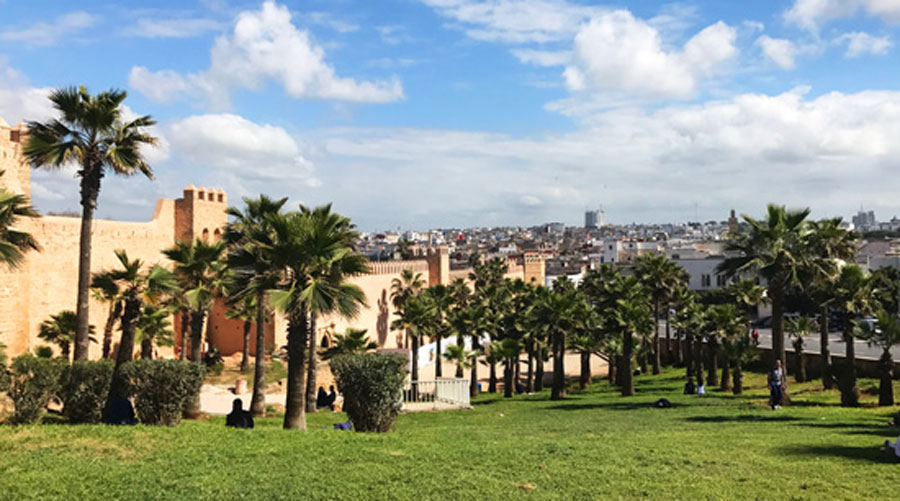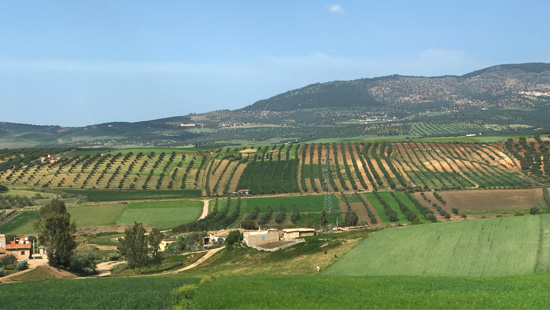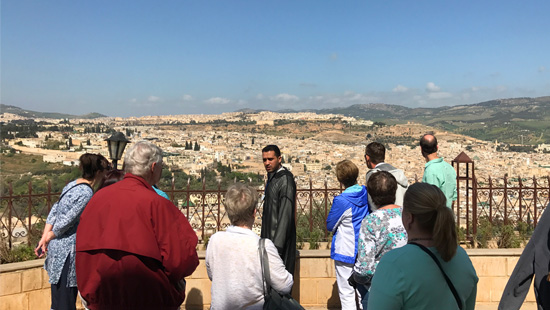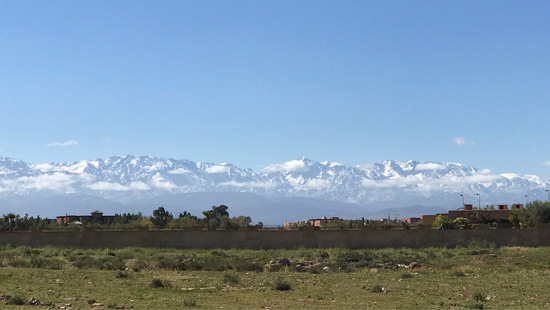
As a member of the Collette team, I get to travel to all kinds of amazing places that shift my perspective of the world every time, but my experiences with tours in Morocco have changed me in ways I didn’t expect. This is part four of four in which I explore my many incredible experiences with you. Enjoy! This is the last in my series on Morocco travel. You can find links to the rest at the end of this blog entry.
The Landscapes and Climate of Morocco
When Morocco’s temperature and landscape come to mind, those who have never been might assume that sand dunes and a hot, hot heat is the norm. And whilst in the south this is true, much of north-eastern Morocco is the complete opposite. Rolling green hills and farmland is what most will see as they travel between Morocco’s major cities.


In March, Morocco is a temperate landscape that dances perfectly between cool and warm depending on where you are in the region, which made this adventure quite comfortable as we traversed from coastal Casablanca and Rabat inland to Fez and Marrakesh.

Situated south of Spain and the Mediterranean Sea on the African continent, west of Algeria, east of the Atlantic Ocean and north of Mauritania, the temperatures vary greatly from north to south, with the south being predominantly arid and poorly populated and the north akin to Spain and Portugal’s climate. Much of this is due to the country’s terrain being largely mountainous.
The Atlas Mountain range, stretching across from the southwest of Morocco up to the north-east, creates a geological barrier between the ocean currents blowing in from the Atlantic Ocean, keeping the areas north west of the range cooler whilst the areas to the south are hot and arid. None-the-less, a light jacket was more than enough to keep me comfortable.

Please follow this link for my first post about Moroccan Architecture. You can find information about Moroccan Cuisine and Agriculture here and, learn how to haggle at the Souks here.
I cannot wait for my next adventure so that I can share it with you!

